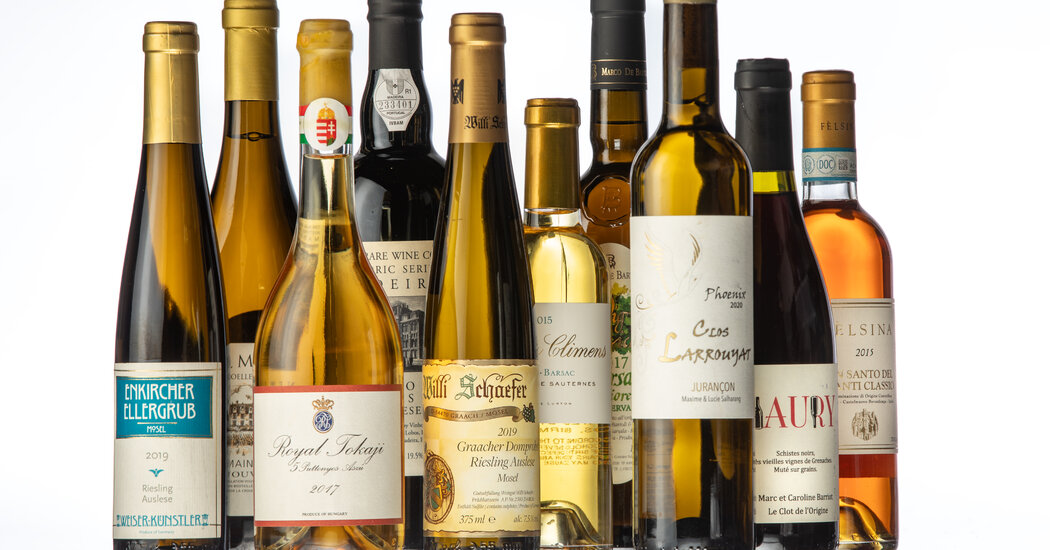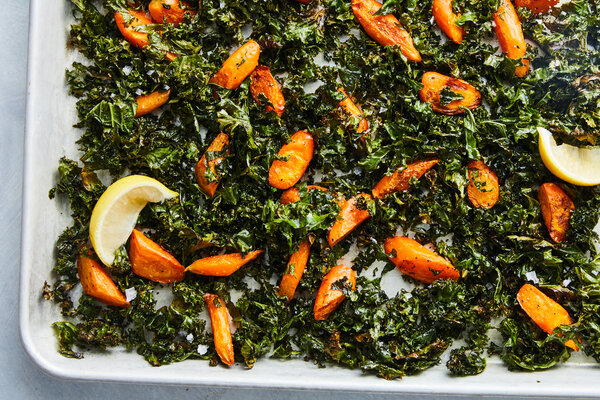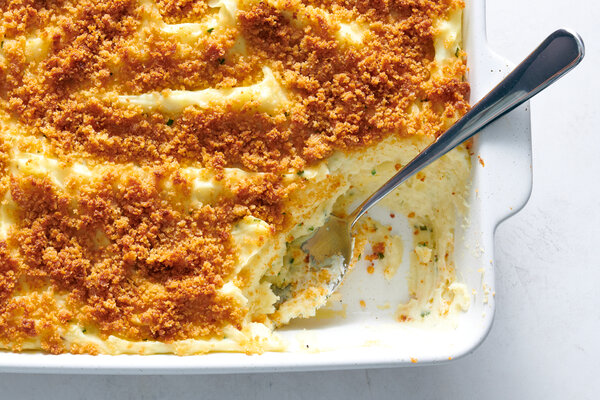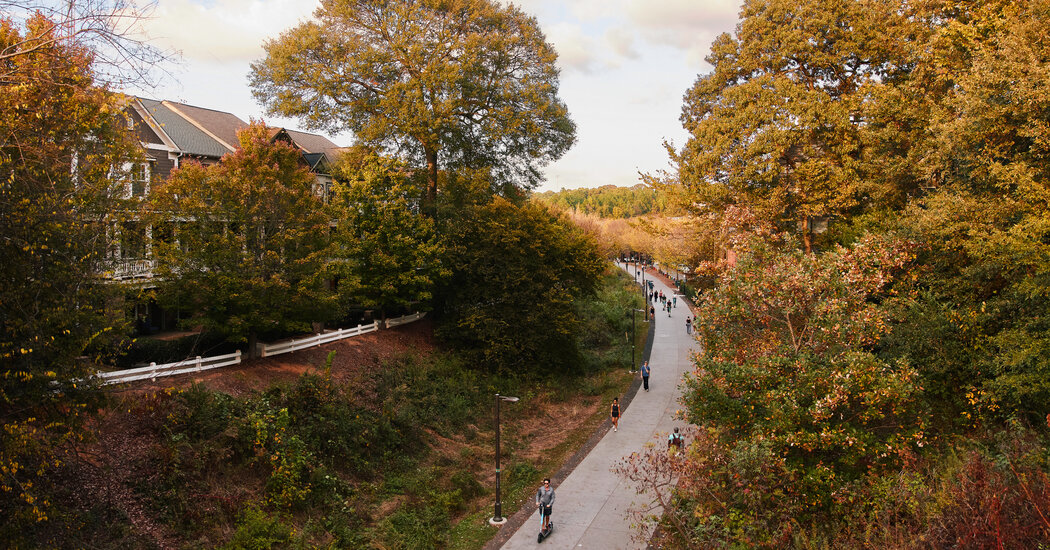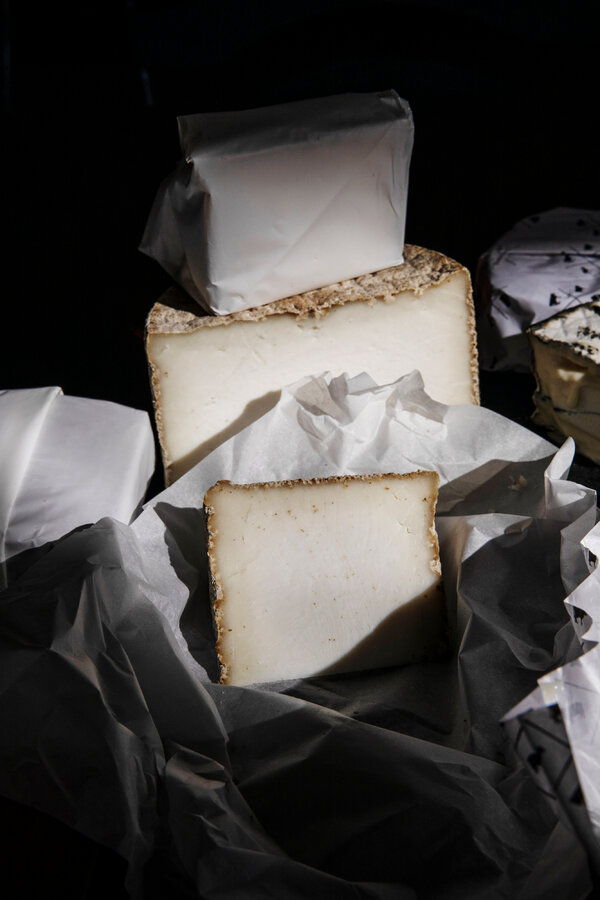We all know that Valentine’s Day is simply a corporate money grab, a holiday with one purpose: obliging you to buy cards, flowers, jewelry, chocolates and candies, wear red and order from overpriced menus on one of the busiest restaurant nights of the year.
In other words, it’s great fun. And since it’s one of the biggest days of the year for consuming sweets, I’d like to make a pitch this year for sweet wines.
It’s not an easy pitch to make. Good bottles are luscious, nuanced and captivating. But they are arduous and risky to produce, which means they are relatively expensive. And consumers today find it difficult to incorporate sweet wines — once prized, much sought-after styles — into hectic, health-conscious routines.
I understand this. The era of the after-dinner bottle of port or Sauternes is long over. Classic styles of sweet wine have been unfashionable for decades. And yet, at the right moment, they can be so gloriously delicious.
Valentine’s Day could be the right moment. The focus is desserts and candies, so why not add to the bounty? Rather than try to force uncomfortable pairings of chocolates, bonbons and other desserts with red wine, why not a sweet wine that can truly enhance the pleasure?
While it may seem counterintuitive, sweet wines can go with far more than desserts. Last year I drank Sauternes with oysters on the half shell and boudin noir and thoroughly enjoyed the combinations. Why? Because good sweet wines are not merely sweet. They are beautifully balanced, lively and refreshing, which makes them, if not exactly versatile, less inflexible than you might think. Few wines will go better with strong cheeses.
I went shopping at New York stores for sweet wines recently and found 10 that I highly recommend. It wasn’t easy — the selection has dwindled over the years. But these are all worth checking out.
You may not be able to find each of them, but you will find options that mirror these pleasures. Given the fragmented distribution of wine in the United States and the relative scarcity of sweet wine, it’s hard to find specific bottles.
Recently, I had two wines that I wanted to include on this list because I had enjoyed them not long before: Broc Cellars Mockvin du Broc Rosé 2015, its interpretation of Macvin, a fortified wine of the Jura, and Château Doisy-Védrines Sauternes 2018, an excellent, moderately priced bottle (relative to other Sauternes).
But Broc no longer makes its Mockvin (it instead now makes a version of Angelica, the historic California wine made with the mission grape), and the Doisy-Védrines simply was not to be found. Snap it up if you see it.
One reason many sweet wines are expensive is because they are risky to produce. Sauternes, the Hungarian sweet wine Tokaji aszu and others are at their best when affected by botrytis cinerea, or noble rot, a benevolent fungus that concentrates and amplifies the sweetness and complexity. But botrytis depends on particular weather conditions that are impossible to control and can easily turn catastrophic, ruining a harvest rather than enhancing it.
They are also labor intensive, as harvests can often be bunch by bunch over a prolonged time. Most of the bottles on this list are not even full size, which means the cost per glass is even higher.
You probably don’t buy a box of chocolates and flowers every day, and you won’t often drink sweet wine, either. But on a special occasion, why not? Added bonus: These wines look gorgeous by candlelight.
Here are the 10 bottles in ascending order of price.
Clot de L’Origine Maury 2020, 17.5 percent, $33, 500 milliliters
A few Valentine’s Days ago I tried to decide which wines went best with chocolate. Among my favorites was Maury, a little-known fortified wine from Roussillon in southern France. This bottle, from Clot de L’Origine is made entirely of biodynamically farmed grenache. It’s understated yet potent and will go well with sweets and with strong cheeses. The wines from Banyuls and Rivesaltes, two neighboring areas in Roussillon that make similar wines, are also very good with chocolate. (Nomadic Distribution, Los Angeles)
Clos Larrouyat Jurançon Moelleux Phoenix 2020, 12 percent, $35, 500 milliliters
Clos Larrouyat is a tiny domaine in Jurançon in the southwest of France where the proprietors, Maxime and Lucie Salharang, farm organically and carry on the local tradition of making both dry and sweet wines. The Phoenix cuvée is made entirely of petit manseng, which is dried on the vine to concentrate the sugar. The wine is rich and sweet yet supremely balanced, which means it’s refreshing. Try solo or with a fruit tart. (Kermit Lynch Wine Merchant, Berkeley, Calif.)
Marco De Bartoli Marsala Superiore Oro Riserva Vigna La Miccia 2017, 18 percent, $47, 500 milliliters
Marsala has long been vilified as an industrialized supermarket product. Most wines labeled Marsala sadly fall into that category, but real Marsala is a delight. No producer is more responsible for the preservation of real Marsala than Marco De Bartoli. This cuvée is made entirely from organically grown grillo grapes. It’s got a savory, yeasty aroma, but it’s apple-fresh and, though sweet, you could easily drink this with dinner, cheese or dessert. (Louis/Dressner Selections, New York)
Domaine Huet Vouvray Le Mont Moelleux 2020, 13 percent, $50, 750 milliliters
Chenin blanc is one of most versatile grapes, capable of making wines that range from bone dry to lusciously sweet. This bottle from Huet is not so much sumptuous as it is sweet in a restrained way. It’s rich, complex and would go beautifully with a cheese course or even a cheese soufflé. (The Rare Wine Company, Brisbane, Calif.)
Weiser-Künstler Mosel Enkircher Ellergrub Riesling Auslese 2019, 8 percent, $50, 375 milliliters
I love the balanced, expressive wines from Konstantin Weiser and Alexandra Künstler, who are focused on small lots of old vines on steep slopes in the Mosel. This is the first time I’ve tried one of their intensely sweet ausleses, and it’s wonderful, riding on a knife’s edge of peachy sweetness and lively acidity. It’s a treat, either by itself or with dessert. (Vom Boden, Brooklyn, N.Y.)
Willi Schaefer Mosel Graacher Domprobst Riesling Auslese No. 11 2019, 7.5 percent, $50, 375 milliliters
A second German auslese? Why not? It’s so good I couldn’t help including it. The tiny Willi Schaefer estate is one of the great sweet wine producers. While this bottle also comes from the Mosel, it differs from the Weiser-Künstler in its elegance, depth and precision, and finds a way to be simultaneously sweet, spicy and saline. (Skurnik Wines, New York)
Château Climens Barsac 1er Cru 2015, 14 percent, $52, 375 milliliters
Sauternes and Barsac are the classic sweet wines of Bordeaux, and are, as with most sweet wines, greatly underappreciated today. This bottle, from Château Climens, a terrific producer, is lively and powerful yet refreshing, balanced, deep, honeyed and nuanced. (Vineyard Brands, Birmingham, Ala.)
Fèlsina Vin Santo del Chianti Classico 2015, 14 percent, $60, 375 milliliters
Vin Santo is made by air-drying grapes to concentrate them before an extended aging period in barrels. Fèlsina, the excellent Chianti Classico producer, uses a combination of trebbiano, malvasia and sangiovese grapes for this cuvée. The result is an exquisite wine the color of dark amber, creamy sweet with a round, almost buttery texture. (Polaner Selections, Mount Kisco, N.Y.)
Royal Tokaji 5 Puttonyos Aszu Red Label 2017, 11 percent, $60, 500 milliliters
The Tokaji aszu wines of Hungary are legendary yet harder to find than they were a few years ago, and far less well known than they were two centuries ago, when they were renowned in European capitals. This bottle, from Royal Tokaji, is complex, fruity and spicy but utterly fresh with a rich sweetness courtesy of botrytis. (Wilson Daniels, Napa, Calif.)
Rare Wine Company Historic Series Madeira New York Malmsey Special Reserve NV, 19.5 percent, $63, 750 milliliters
Madeira is perhaps my favorite wine with chocolate. This bottle is part of Rare Wine’s Historic Series, which is intended to showcase the various styles of Madeira that were popular in Colonial America. Malmsey is the sweetest Madeira, reminiscent of the Vin Santo but kaleidoscopic in its complexity. One more thing: Madeira lasts forever. Set aside an open bottle and you’ll be ready for future Valentine’s Days (or any occasions) for as long as it takes to finish the bottle. (The Rare Wine Company)
Follow New York Times Cooking on Instagram, Facebook, YouTube, TikTok and Pinterest. Get regular updates from New York Times Cooking, with recipe suggestions, cooking tips and shopping advice.



